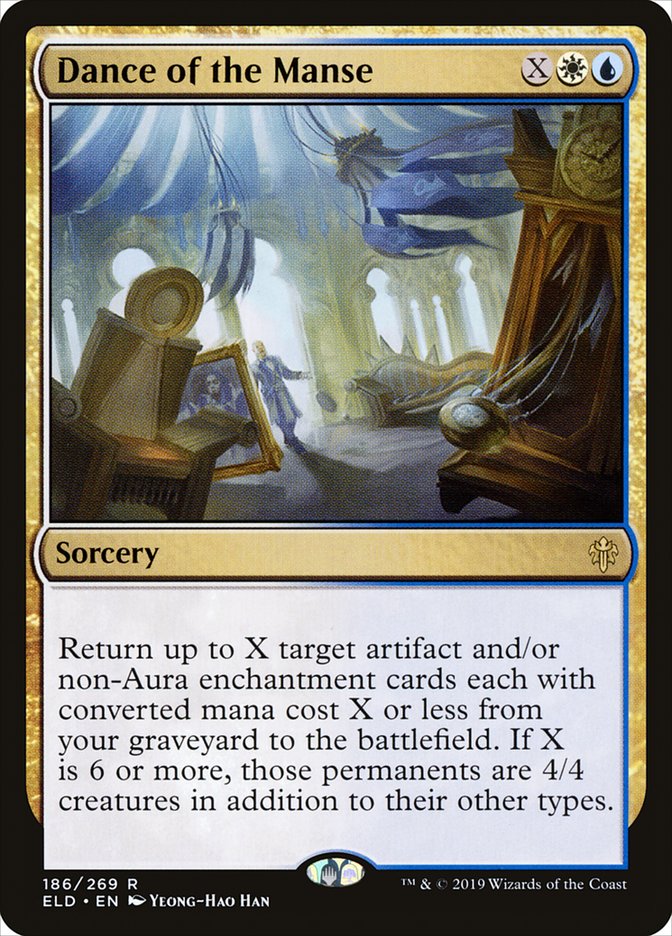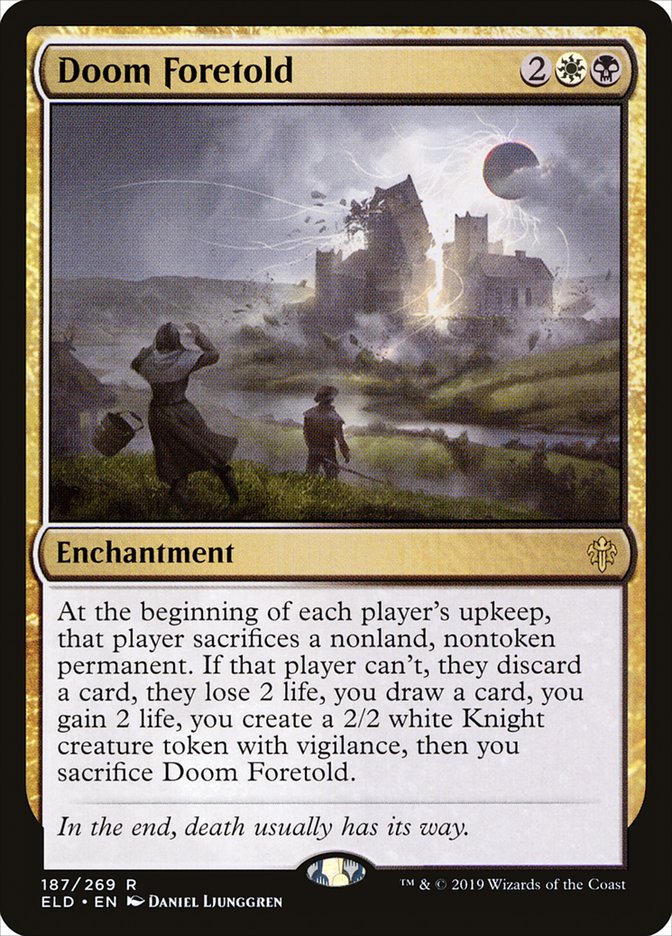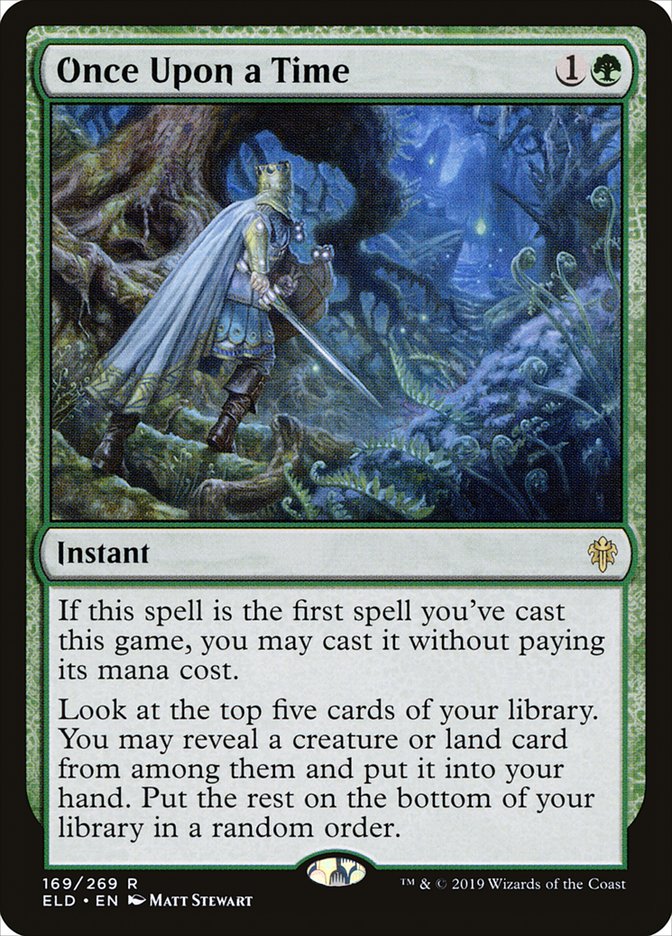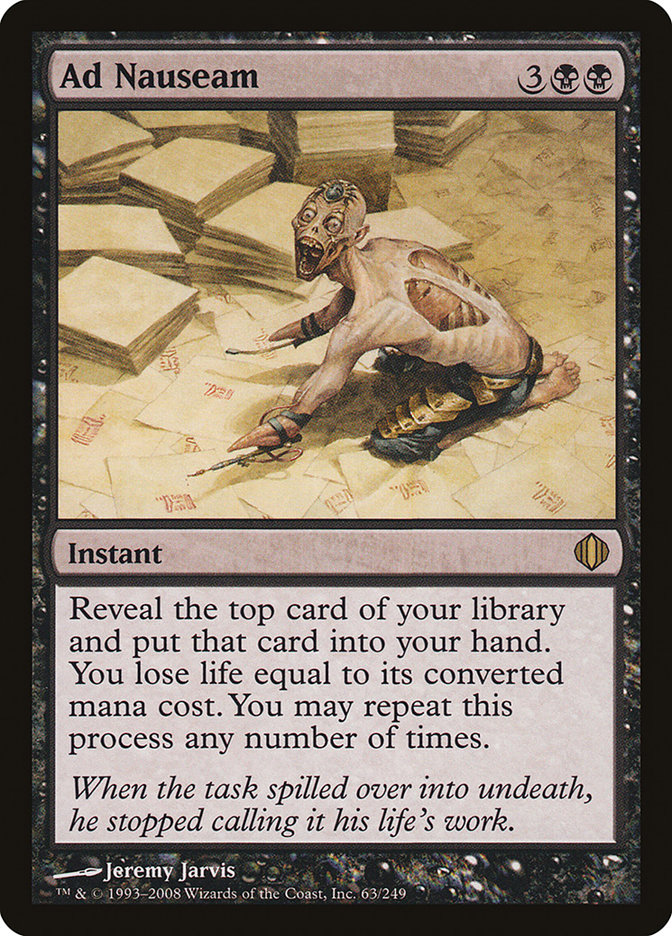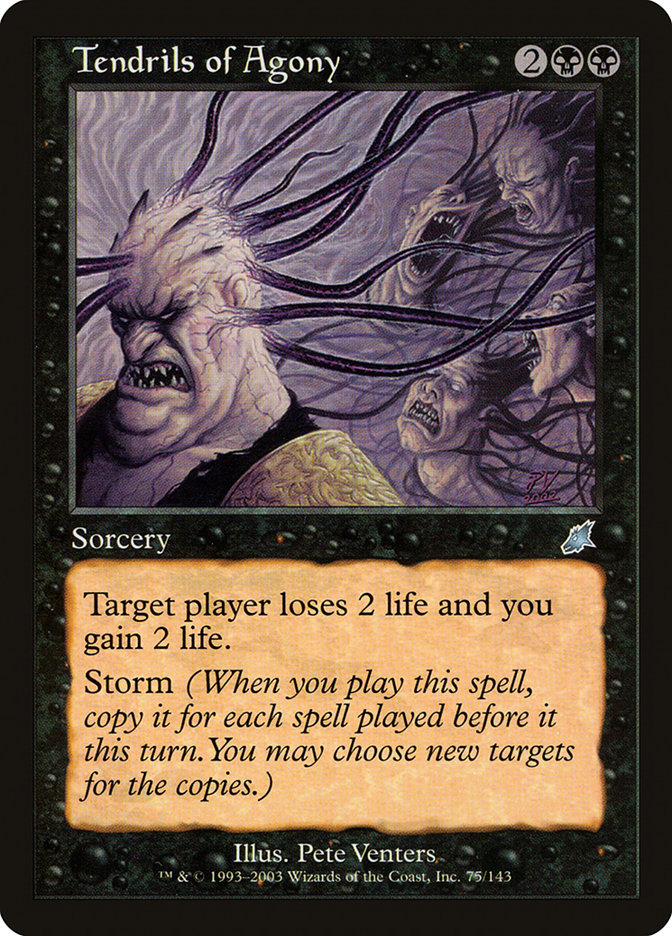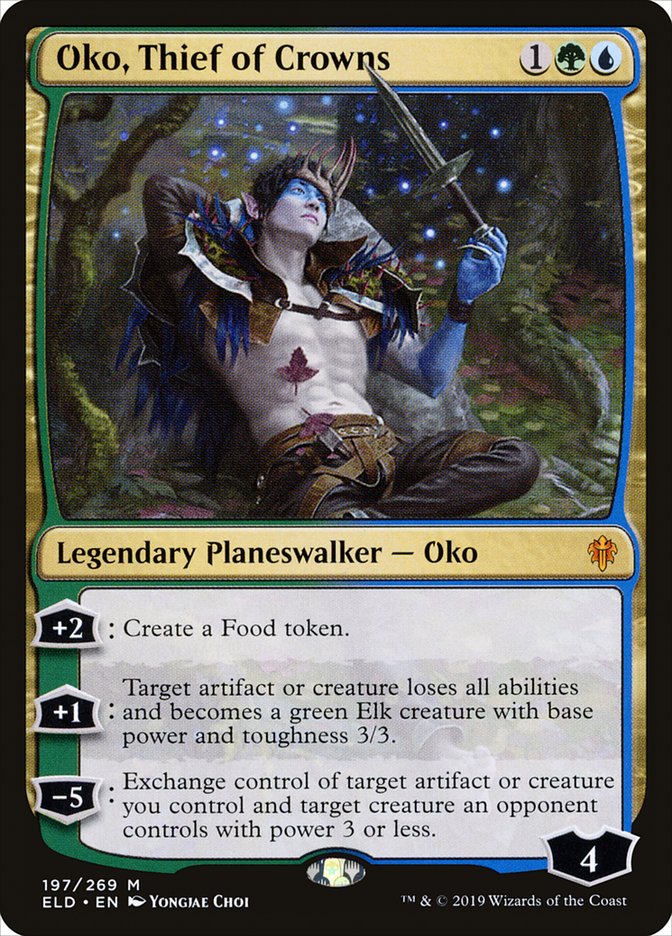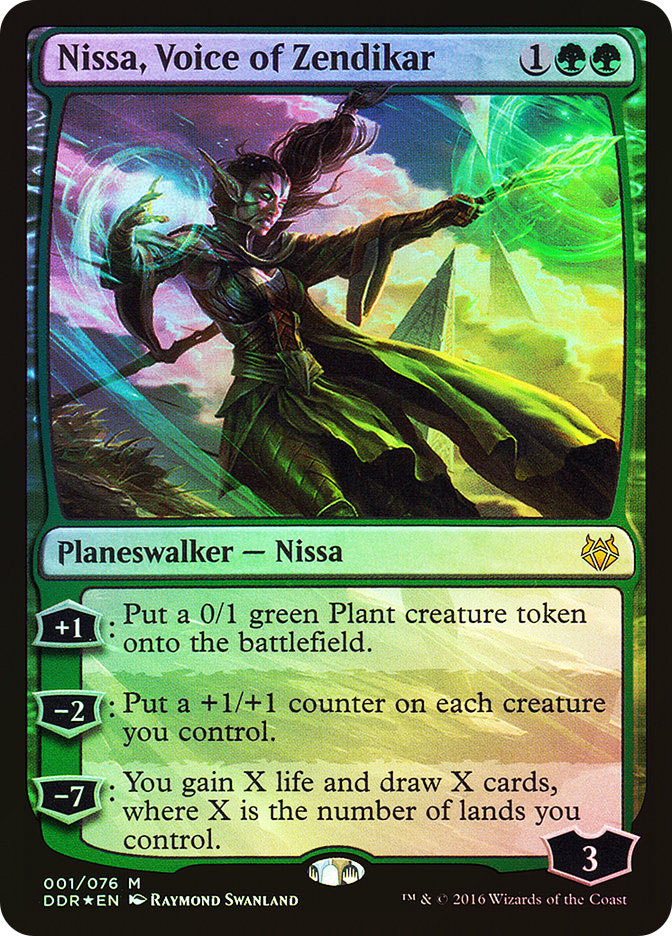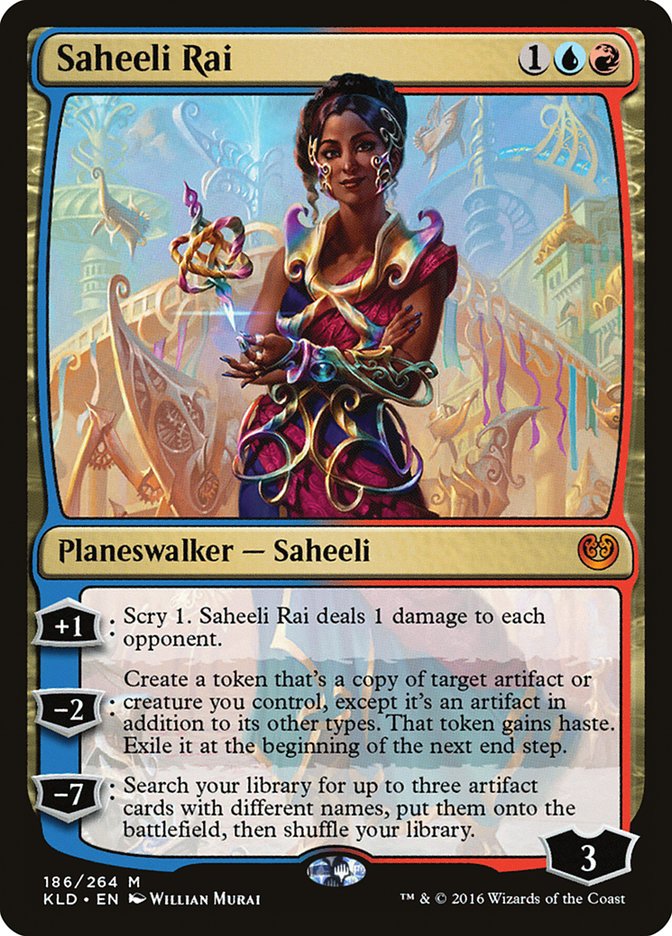Welcome to another edition of Fact or Fiction! Today, Ryan Overturf, Sam Black, and Emma Handy are here to render their verdicts on five statements about Throne of Eldraine and its impact on SCG Philadelphia this coming weekend. Don’t forget to vote for the winner at the end!
1: After Bryan Gottlieb Fandom Legends win last week, Esper Stax is the Throne of Eldraine Standard deck to beat leading into SCG Philadelphia.
Ryan Overturf: Fiction. The first time I played against this deck I bungled it pretty badly, but once you know how to manage your nonland permanent count, Doom Foretold loses a lot of power. It’s really good at picking on unassuming opponents, which contributes to it being a great Week 1 deck, though I don’t think it takes much experience to figure it out. I’m convinced that this deck can beat one Negate, though I’m not entirely convinced that it can beat two.
Esper Stax’s closing speed is quite slow, which, barring serious design mistakes, makes it difficult for it to sit at the top of a format. You have more opportunities to stumble than faster strategies, and a lot of your draws are full of air with all of your mopey cantrip artifacts. I understand how Bryan won Fandom Legends, though I’m not super-optimistic about the deck seeing continued success.
Setting power level aside, being the “deck to beat” also has to do with representation in the field. Slow Esper decks rarely account for very significant metagame shares. I’d make sure that you have a plan against Esper Stax, especially considering that other players are much higher on the deck than I am, but I’d probably focus more on beating Cavalcade of Calamity in Philly.
Sam Black: Fiction. I know Emma has been very successful with the deck, and I imagine she’ll be singing its praises. I personally, have been operating at my usual stage of trying the weirder cards to see if anything sticks, and don’t have a lot of experience with how the best decks play against each other. Esper Stax may very well be the best deck, or currently best-positioned deck, but my sense from following content and playing online is that people are exploring all kinds of things, and we’ve already had too many results before the set is even released in paper for a single result to be defining, including Bryan Gottlieb more recent win this weekend. The fact that both wins were at Bryan’s hands specifically means that people who are copying results might be more likely to assume his more recent choice is better.
More to the point, it’s just too early for there to be a deck to beat, and the primary utility that the concept has is in thinking about what to target with your deck, and while Esper Stax is a real deck that should be considered, there’s an issue that there haven’t really been successful decks that are very similar to it so far this season, so you don’t get a lot of incidental value out of targeting it. Compare this to something like preparing for “Midrange Green with Questing Beast,” which features a wide range of decks that people have reported success with, and you start to realize that Esper Stax is kind of an outlier in terms of cards and strategies that it shares with other decks.
Imagine one of those image clusters where decks are grouped by how many cards they have in common with each other, and Esper Stax is going to be kind of off to the side, which makes it somewhat hard to justify devoting a lot of attention to, which is honestly something of a strength, but I still wouldn’t use the concept “deck to beat” to describe this. It might be the best deck, but it’s not the deck to beat. That could very well mean it’s the deck to play.
Emma Handy: Fact. I’ve been playing Esper Stax all week and have been struggling with losing. That’s to say, it’s difficult to lose. After playing the deck for six or more hours a day for four days, I had three match losses to show for it.
The deck is incredibly punishing to people who don’t know how to play against the archetype, it’s doing something powerful, and the underlying engine of the deck is the fact that it’s last Standard’s Esper Control shell. It just cut all of the rotating cards for a combo package.
People likely will try to exploit the deck going into the weekend, but with the deck having won the first major event with Throne of Eldraine being legal, it just makes sense that people would hone in on the archetype as a major player.
2: With the addition of Once Upon a Time, Mono-Green Tron is the Modern deck to beat leading into SCG Philadelphia.
Ryan Overturf: Fiction. I’ve heard varying reports of how well Once Upon a Time fits into Mono-Green Tron, though I think most praise that I’ve seen for the inclusion hasn’t weighted the fail case for the card highly enough. When you cast Once Upon a Time in Mono-Green Tron and find an Urzatron piece you didn’t have, it’s exceptional. If your hand wasn’t otherwise keepable and you miss or if you have to actually spend mana on the spell, it’s horrible. I don’t expect it to show up in many games and be fine when it comes to assembling Turn 3 Urzatron plus threat; I imagine it will tend towards one extreme or the other, and minimizing negative extremes is the entirely philosophy behind Mono-Green Tron.
If you want to talk about decks that are seriously improved by Once Upon a Time, I would examine Amulet Titan and Devoted Druid Combo. Both of these decks are looking for pieces that can come together in more unique permutations than having a specific set of three lands and are much better at generating green mana. We’ll see how well Once Upon a Time pans out in Modern, but I have yet to be overly convinced of the hype.
Sam Black: Fiction. Mono-Green Tron gets Once Upon a Time, but Urza gets Emry, so I’ll take the blue cards. I’ve been playing Paradoxical Outcome for a few weeks and Whirza before that, and they’ve felt far ahead of the rest of the format. I think Paradoxical Outcome is stronger, of course, as I’ve been playing it, and I don’t think Emry switches that, but it could. Regardless, Paradoxical Outcome has been picking up a ton of steam lately, and after Luis Scott-Vargas Tweeted about it, I think it’s fully mainstream. It still probably won’t be as popular as Mono-Green Tron just due to that deck’s history and the fact that more players have experience with it, but if you’re trying to win the tournament, I’d take Paradoxical Urza as the deck to beat.
Emma Handy: Fact…ish? Mono-Green Tron has been at the top of the Modern archetype tier list for about a year or so now, and nothing short of Hogaak has really changed that. Once Upon a Time is the kind of card that can lower its fail rate, but the deck was already incredibly consistent. Adding another layer to that consistency, while sticking to the same gameplan the deck had previously, isn’t fundamentally altering the way that Mono-Green Tron engages with other decks.
This means that Mono-Green Tron is a more consistent and resilient iteration of itself, but the other decks that were seeing play before are still going to be as strong as they were previously. Once Upon a Time can change a couple of the fairer matchups, but it’s still going to suffer against fast combo and anything that punishes decks that don’t interact for the first couple of turns.
3: With Cyrus Corman-Gill’s win at GP Atlanta, Storm is the Legacy deck to beat leading into SCG Philadelphia.
Ryan Overturf: Fact. The arms race around Wrenn and Six in Legacy has left me wondering why so many players are averse to registering combo decks. It’s true that Force of Will can make some of your games feel hopeless, but Storm specifically can make beating Force of Will easy with its bevy of discard spells.
I don’t want to take anything away from Cyrus. He’s a very dedicated Storm player and the deck is hard as hell to play. It stands to reason that many Legacy players just haven’t had the time or don’t have the aptitude for Storm. But when the whole world is obsessed with looping Wastelands, it frankly makes too much sense to just register the deck that can win the game off a lone basic Swamp.
Sam Black: Fiction. Storm has periodic success in Legacy, but it never really picks up players. Legacy players don’t tend to switch decks all that often, both because the cards are so expensive and the format is so complicated, so I’d expect the metagame to look pretty normal. I’m not a Legacy expert, but my recent experience and what little I’ve followed suggests that Temur Delver will be the most popular deck after the archetype got a big upgrade from Wrenn and Six, and it can easily change a few cards to prepare for Storm.
As an additional point of consideration, starting with SCG Philly, Storm players will have to contend with Deafening Silence, which is a very serious hate card that hasn’t previously been a factor, and I don’t think it’s one Legacy players will be sleeping on.
Emma Handy: Fact. Cyrus is obviously a Storm master and is going to play the deck regardless of its positioning, but in addition to his win in Atlanta, Storm won the most recent MKM event overseas in Barcelona. Oh yeah, and it made the finals of the most recent Legacy Open as well:
Lands (15)
Spells (45)

Veil of Summer is a messed-up Magic card, functioning as a Pyroblast / Silence / Avoid Fate split card. That cantrips. On top of that, with the format moving towards the middle in order to fight Wrenn and Six wars, combo is in a great spot right now.
4: Fires of Invention will be banned in a competitive Constructed format at some point during its lifespan.
Ryan Overturf: Fiction. Is this honestly the best that we’ve got for this week? I thought Throne of Eldraine had a wide range of cool implications, but this is a “slow news day” kind of question. This card isn’t remotely bannable.
It costs four (four!) and it requires you to play very specific cards, which either means stuff like Ancestral Vision for older formats or stuff that costs five or more in Standard. Both of these types of cards are extremely limiting in gameplay and have serious deckbuilding costs. And while we’re on the topic of extremely limiting gameplay and deckbuilding costs, you can’t really play instants in your Fires of Invention deck. It does cool and powerful things, sure, but it feels way more like a fun, slow, and narrow card than a broken engine.
I guess you can’t take anything off the table, seeing as Wild Nacatl was once banned in Modern, but I will say that this question reminds me of that circumstance.
Sam Black: Fiction. It’s a powerful mana engine and pairs extremely well with Fae of Wishes, but it’s still a four-mana card that creates serious restrictions and requires other things to work out. Very few cards end up banned, and we have little to no evidence to choose this in particular as a candidate. It would basically all come down to theory, and this card is essentially capped at fixing and doubling your mana, which is powerful to be sure, but not “there’s no way this could possibly be safe” powerful. I’m not seeing it, and I can’t imagine predicting a ban as anything other than reactionary nonsense at this point.
Emma Handy: Fiction. This one is tough. If there’s a card in Throne of Eldraine that is too powerful for what it does, it’s likely going to be Fires of Invention. That being said, as we’ve seen with Wilderness Reclamation, four-drop enchantments aren’t the most difficult things to deal with.
On top of that, the decks that abuse Fires of Invention the hardest are going to have the clunkiest fail-rates. Sure, things look impressive when you’re casting a pair of five-drops into a pair of six-drops, but that hand looks horrendous when it’s missing a ramp spell or land drops.
5: Oko, Thief of Crowns is the most powerful three-mana planeswalker for Standard play of all time.
Ryan Overturf: Fiction. Now this! This is a question! I had to take some time to look over every three-mana planeswalker in Standard history and make a short list of options.
Teferi, Time Raveler is pretty steep competition. That card is a real headache in a ton of matchups and was miserable when it existed alongside Teferi, Hero of Dominaria. Oko’s proactive nature and the possibility to show up on Turn 2 off Gilded Goose makes me lean towards Oko in the comparison, though. Teferi, Time Raveler never actually closed a game.
Liliana, the Last Hope was good, but I don’t think she was ever dominant. A contender, but not the winner.
Jace Beleren is a very curious entry, though you may have to disqualify him due to the rules change that invalidated his primary use. Jace Beleren showed up in one of the most broken Standard decks of all time in Caw-Blade, but that’s because back then there was a planeswalker uniqueness rule that meant your Jace Beleren preemptively destroyed your opponent’s Jace, the Mind Sculptor. Outside of that context, Jace Beleren isn’t a very serious consideration.
Ultimately, though, my vote for the most powerful three-mana planeswalker in Standard all-time goes to the short-lived reign of terror of Sorin, Imperious Bloodlord. It was cool to give us a short look at what it might be like if R&D wanted Vampires to be the best deck in Standard, but I sure am glad the window of Sorin and Ixalan being legal at the same time is over. The deckbuilding restrictions were quite serious, though when Sorin showed up on Turn 3, the rest of the game was often a formality. Oko is more flexible and will probably be a major contributor to many wins when cast early, but I think the game will actually just end on the spot less often than when Sorin showed up on time.
Sam Black: Fact. This is a bold claim, but I’m in. The loyalty is just so high and goes up so fast, and that really puts it in its own class. The fact that it’s a threat and answer, and adds loyalty to do both, is just unprecedented. I think it’s more likely than not that this statement will just be a given by the time it rotates out of Standard. More than enough has been written about why this card is so amazing in theory, and I believe it’s absolutely lived up to the hype.
I’m still a buyer that this card is more underrated (not given enough respect in older formats, specifically) than overrated at this point. I’m not sure if it was Liliana of the Veil or Teferi, Time Raveler or some other planeswalker before, so I’m not even sure which card to directly compare Oko to, but Oko is the benchmark now.
Emma Handy: Fiction. Let’s sprint down memory lane so I can rapid-fire the unbelievable hurdles that Oko has to clear:
Teferi has warped the entirety of Standard around himself since his printing. Mono-White Aggro decks were splashing Teferi because he’s that incredible.
Selesnya Tokens was the best deck during its time in Standard by such a comical margin that there was talk about banning Dromoka’s Command. The deck was mostly held up by Gideon, Ally of Zendikar, but the three-four punch of Nissa into Gideon was a lot of what put the deck over the top.
That isn’t even getting into what Nissa could do with a Winding Constrictor.
Saheeli Rai was part of a Standard-legal Splinter Twin combo that sees fringe Modern play.
We good?


